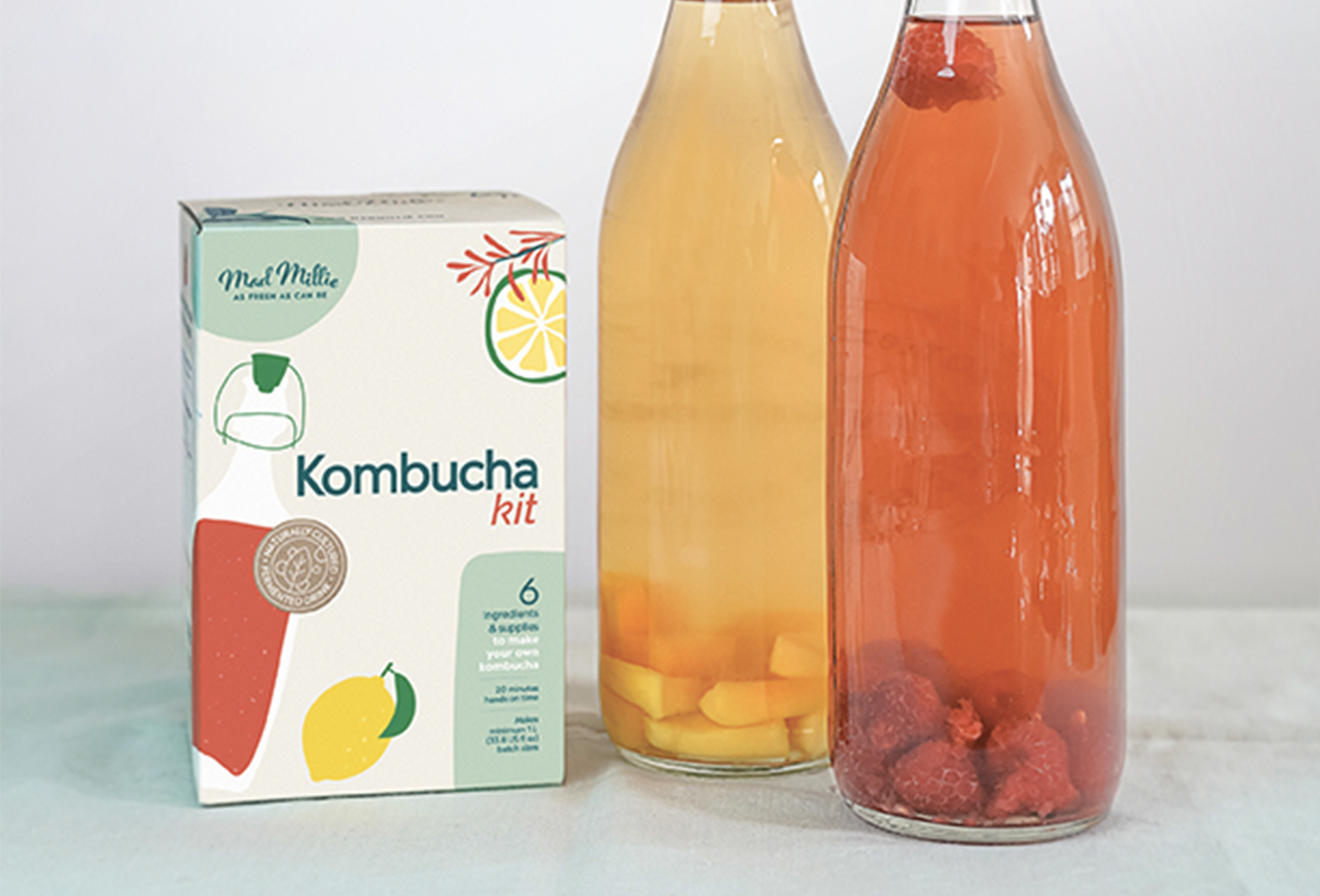Our Blog

Kombucha Second Ferment
For beginner kombucha brewers sometimes the fermentation process can seem a little daunting. There are always questions around the importance of each step and why certain things are done. One area that comes up often is the second ferment, what it’s for and if it’s really necessary.
For beginner kombucha brewers sometimes the fermentation process can seem a little daunting. There are always questions around the importance of each step and why certain things are done. One area that comes up often is the second ferment, what it’s for and if it’s really necessary.
Trust us, kombucha brewing is easy and once you have started your booch adventure you will quickly understand the ins and outs of each step. With Mad Millie kits our biggest aim is to make creating in the kitchen accessible to everyone. There aren’t any big secrets to fermenting kombucha; just a few key steps that with a bit of trial and error anyone can complete!
Kombucha fermentation happens in two steps, the relatively self-explanatory first and second ferments.
The first ferment is when you turn your sweetened, black tea into delicious, tangy kombucha. Once the Mad Millie scoby is added to your sweetened tea the cultures can start their work. During this step they are busily converting the food (sugar) you have given them into organic acids, carbon dioxide, a tiny trace of alcohol (up to 0.5% when using the Mad Millie recipe so still technically non-alcoholic) and B vitamins.
The types of bacteria and yeast that are in your scoby require air to complete the fermentation; this is why we recommend keeping the top of your kombucha jar or vessel covered with a muslin cloth rather than sealed with a lid. This also means that any carbon dioxide that is produced escapes and your kombucha is flat after the first ferment.

The second ferment is when you get to make it bubbly! The exact same process is followed however instead of the fermentation happening in a jar or vessel with air flow, it happens in a sealed bottle to trap all the carbon dioxide. This is also an opportunity to get creative and add any flavours or infusions that you might want to experiment with.
Completing a second ferment is not necessary to get all the benefits of kombucha and enjoy its tangy taste. If you don’t have time or haven’t got any bottles yet, we recommend a shot of kombucha from day 25 of the first ferment in a glass of sparkling water. However, if you do want bubbles, read on…
Second Ferment Process
- Add 1.5 tsp of white sugar into your clean sterile 750mL glass bottle.
- Pour your kombucha into the bottle through a muslin cloth lined funnel.
- Seal the bottle tightly (a flip top cap is the easiest) and leave at room temperature for 2 -3 days to carbonate.
- Taste test, if it is not as bubbly as you want, leave it out for another day or two.
- Refrigerate your kombucha and enjoy!
You can get as creative as you want with the second ferment! An easy way to add flavour is to add some of your favourite juice into the sterilised bottle, then add your kombucha and seal. This will give both flavour and the sugar the kombucha needs to carbonate. If you add juice or fruit you don’t need to add the white sugar as you are already feeding the live cultures with your infusions.
- Juice flavouring it’s best to start with up to 20% juice and 80% kombucha.
- Fruit is a great way to bring in some different flavour profiles and you can use fresh, frozen or dried. Start with up to 30% fruit and 70% kombucha, keep in mind that dried fruit will often have a higher sugar level.
- Add 2 teaspoons of chia seeds for added nutritional benefits and texture.
- Add a slice of ginger root as well as the sugar to get that fiery ginger flavour.
- Add flavour extracts e.g. vanilla, start with ¼ teaspoon of extract per 1 cup (250mL) of kombucha.
It’s important to second ferment in brewing bottles as the production of gas leads to higher pressure. We recommend reusable glass bottles with flip top caps. Be careful when opening bottles after a second ferment, as they are under pressure they may fizz.
Store your kombucha out of direct sunlight, between 24 – 30oC (75 – 86oF). If you are fermenting other food or beverages make sure there is a gap of at least 1 metre between the kombucha and these. This will ensure no cross contamination of the different bacteria and yeast.
Good luck and any questions or feedback please let us know!
